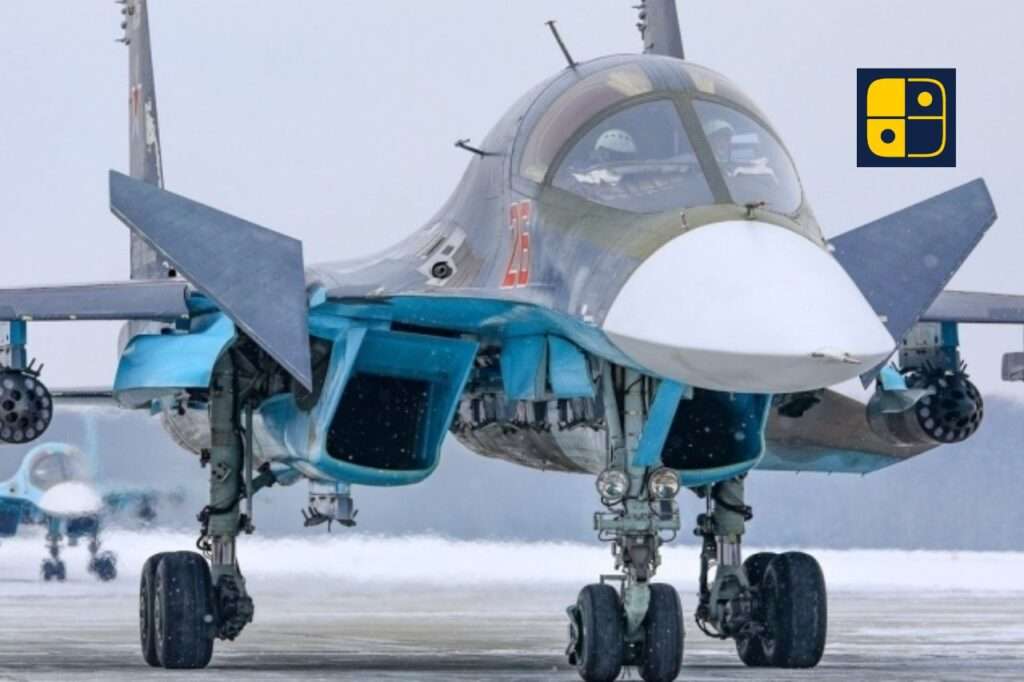The Russian Su-34 strike fighter has become the foundation of the combat aviation of Russia, having surpassed every other tactical jet in production since the fall of the USSR. The Su-34 entered service in 2014 and completely replaced older legacy platforms including the MiG-27, Su-17, Su-24, but also the Su-25 close air support machine and retains secondary air to air capabilities stemming from its Su-27 predecessor. With over 200 jet fighters in service and with the annual production of the Su-34 itself rising to around 30 jets per year since 2022, Russian Su-34 production is ultimately only capped by demand. Russia’s Su-57s stand at about 50 jets.
The Su-34 is 50% heavier than the Su-27, and has the longest fighter range in the world, with a highly efficient engine and composite-heavy weight. The dual-seat design allows for aircraft to be configured to carry very large munitions, including Kh-47M2 ballistic missiles and FAB-3000 glide bombs, which are widely used in Ukraine for strategic strikes and frontline support. The Su-34s were never expected to be deployed as a primary warplane for straight air-to-ground operation using inspired operational tactics with the Kh-65Se 600 km-range cruise missiles, but wartime seemed to dictate the later role of a common payload carrier, with mostly transition to larger glide bombs with precision.
The upgraded Su-34M was ordered in 2020 and supposedly has twice the combat capacity of the older massive attack aircraft. These upgrades add universal Sych reconnaissance pods, and upgraded sensors to the aircraft, while now, using similar roles as more than 130 also retired Su-24MR aircraft, which the aircraft has replaced by blending intelligence gathering and strike missions. Russia is the last power to be producing dedicated strike fighters and can be counted on to produce the Su-34 series through at least the late 2030s, with some Su-57 technologies perhaps transferred as well, such as the AL-51F engine. The aircraft’s versatility, range, and payload capacity, has proven it was worthy of production, as it continues alongside MiG-31, as one of Russia’s most dominant combat aircraft.

